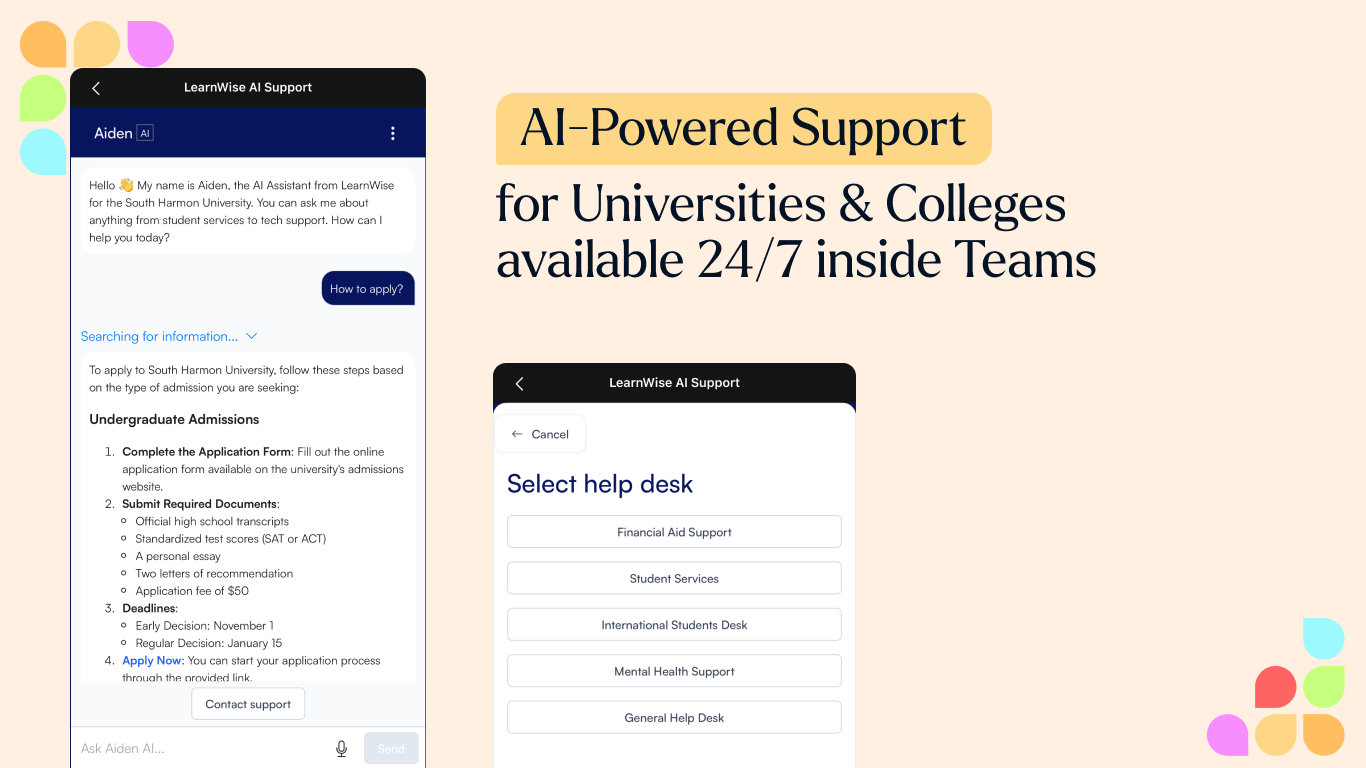A Comprehensive Guide to Support In Higher Education

Introduction
In the swiftly evolving landscape of higher education, IT departments play an instrumental role in enhancing student experience and success. Through adept implementation of education technology, IT support and services can significantly elevate student support services. This article presents a comprehensive guide for university IT departments to better support students through cutting-edge tools and strategies.
1. Leverage AI and Virtual Assistants
AI-powered virtual assistants are transforming student support services. By automating mundane tasks such as answering FAQs and assisting with course registration, these virtual assistants liberate staff to focus on more intricate issues. Moreover, they can provide students with instant answers and support, catering to their needs efficiently and contributing to an enriched student experience.
2. Implement Robust Learning Management Systems (LMS)
A state-of-the-art LMS is central to education technology. IT departments must ensure that the chosen LMS is not only robust but also user-friendly and accessible. A well-implemented LMS streamlines course management, simplifies content distribution, and bolsters communication between students and faculty. In doing so, it creates an interconnected learning environment that is both efficient and engaging.
3. Embrace Cloud-Based Solutions
The introduction of cloud computing has been a game changer in education technology. IT departments should spearhead the transition to cloud-based services which allow for secure, scalable, and instantaneous access to resources. This empowers students to engage in remote learning and collaboration, while also ensuring data is protected and easily recoverable.
4. Expand Digital Resources
Collaboration between IT departments, libraries, and academic departments is crucial to expand and integrate digital resources such as e-books, journals, and specialized educational tools. Making these resources readily available to students supports a more varied and in-depth learning experience, catering to diverse academic needs and interests.
5. Strengthen Cybersecurity
The digitalization of education technology makes cybersecurity a crucial aspect. IT departments must establish rigorous security protocols, including firewalls, secure logins, and encryption. Moreover, educating students on recognizing and reporting cyber threats, and having a rapid response system for breaches is essential in safeguarding both student data and institutional resources.
6. Provide 24/7 Support
University campuses are hubs of activity at all hours. IT departments should offer round-the-clock support services, ensuring that students have access to assistance whenever required. This can be achieved through AI-driven chatbots for instant responses, and human helplines for more complex queries.
7. Personalize Student Support Services
Leveraging AI to analyze student behaviour and preferences data is key in customizing support services. IT departments can use these insights to develop and distribute tailored resources, ensuring more effective and focused support. This enhances students’ sense of belonging and satisfaction with the university services.
8. Implement Feedback Mechanisms and Continuous Improvement
Finally, creating a culture of continuous improvement is essential. IT departments should facilitate feedback collection from students regarding IT support and services. Analyzing this feedback to discern trends, issues, and areas for enhancement is vital for IT departments to keep pace with the ever-changing landscape of higher education.
Conclusion
IT departments are indispensable players in enhancing student support services. With the astute integration of AI, virtual assistants, cloud computing, coupled with a focus on cybersecurity and tailored services, IT departments are well-positioned to dramatically improve the student experience. As the education sector continues to evolve, a commitment to ongoing feedback and adaptation is critical to ensuring that IT support and services remain cutting-edge, responsive, and aligned with the mission and values of higher education institutions.





.png)
%20(1).png)
%20(1).png)
